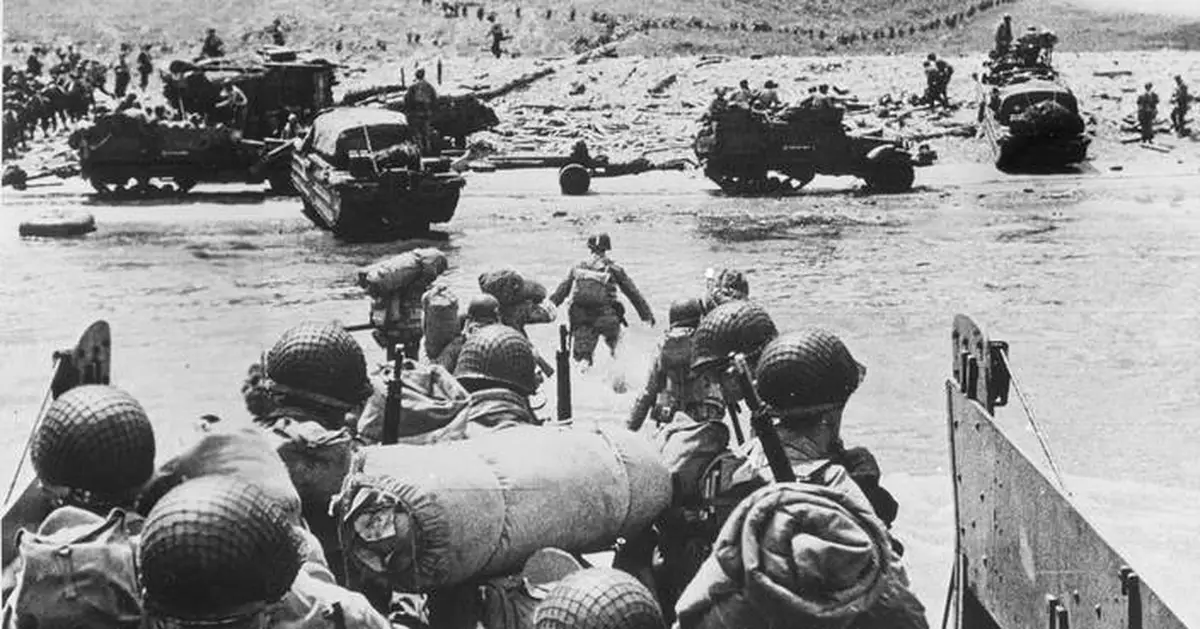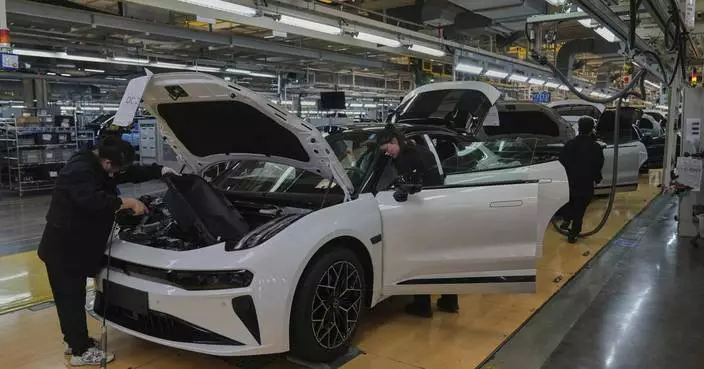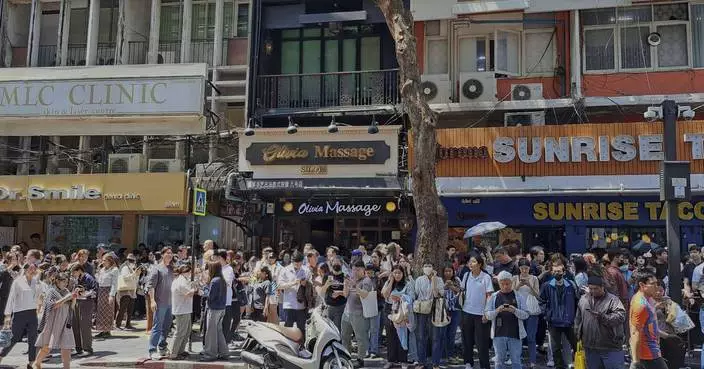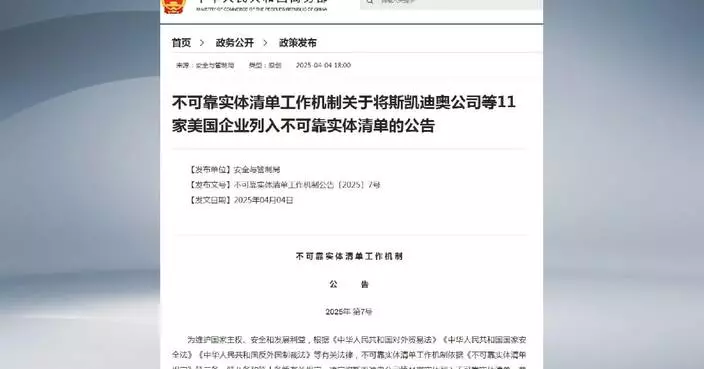OMAHA BEACH, France (AP) — The June 6, 1944, D-Day invasion of Nazi-occupied France was unprecedented in scale and audacity, using the largest-ever armada of ships, troops, planes and vehicles to punch a hole in Adolf Hitler's defenses in western Europe and change the course of World War II.
With veterans and world dignitaries gathering in Normandy to commemorate the 80th anniversary of the landings, here's a look at some details about how the operation unfolded.
Nearly 160,000 Allied troops landed in Normandy on June 6, 1944. Of those, 73,000 were from the United States and 83,000 from Britain and Canada. Forces from several other countries were also involved, including French troops fighting with Gen. Charles de Gaulle.
The Allies faced around 50,000 German forces.
More than 2 million Allied soldiers, sailors, pilots, medics and other people from a dozen countries were involved in the overall Operation Overlord, the battle to wrest western France from Nazi control that started on D-Day.
The sea landings started at 6:30 a.m., just after dawn, targeting five code-named beaches: Utah, Omaha, Gold, Juno, Sword. The operation also included actions inland, including overnight parachute landings on strategic German sites and U.S. Army Rangers scaling cliffs to take out German gun positions.
Around 11,000 Allied aircraft, 7,000 ships and boats, and thousands of other vehicles were involved.
A total of 4,414 Allied troops were killed on D-Day itself, including 2,501 Americans. More than 5,000 were wounded.
In the ensuing Battle of Normandy, 73,000 Allied forces were killed and 153,000 wounded. The battle — and especially Allied bombings of French villages and cities — killed around 20,000 French civilians.
The exact German casualties aren’t known, but historians estimate between 4,000 and 9,000 men were killed, wounded or missing during the D-Day invasion alone. About 22,000 German soldiers are among the many buried around Normandy.
Inevitably, the number of survivors attending major anniversary commemorations in France continues to dwindle. The youngest survivors are now in their late 90s. It's unclear how many D-Day veterans are still alive. The U.S. Department of Veterans Affairs says it doesn't track their numbers.

FILE - American paratroopers, heavily armed, sit inside a military plane as they soar over the English Channel en route to the Normandy French coast for the Allied D-Day invasion of the German stronghold during World War II, June 6, 1944. Nearly 160,000 Allied troops landed in Normandy on June 6, 1944. Of those, 73,000 were from the United States, 83,000 from Britain and Canada. Forces from several other countries were also involved, including French troops fighting with Gen. Charles de Gaulle. The Allies faced around 50,000 German forces. (AP Photo, File)
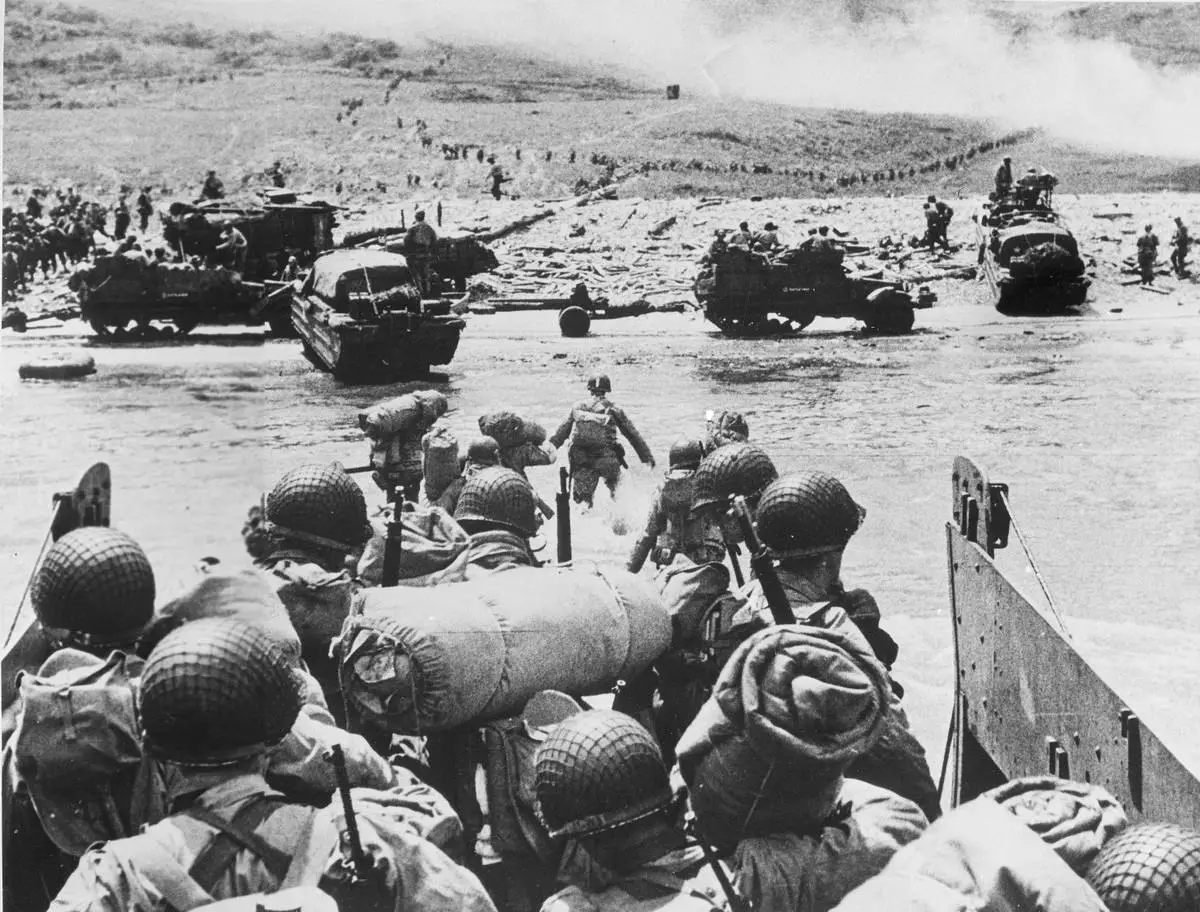
FILE - American soldiers and supplies arrive on the shore of the French coast of German-occupied Normandy during the Allied D-Day invasion on June 6, 1944 in World War II. Nearly 160,000 Allied troops landed in Normandy on June 6, 1944. Of those, 73,000 were from the United States, 83,000 from Britain and Canada. Forces from several other countries were also involved, including French troops fighting with Gen. Charles de Gaulle. The Allies faced around 50,000 German forces. (AP Photo, File)
NEW YORK (AP) — U.S. stocks are rallying Tuesday after companies reported fatter profits than expected, and other U.S. investments are also steadying a day after falling sharply on worries about President Donald Trump’s trade war and his attacks on the head of the Federal Reserve.
The S&P 500 was 2% higher in morning trading and on track to recover most of Monday’s drop. The Dow Jones Industrial Average was up 765 points, or 2%, as of 10:45 a.m. Eastern time, and the Nasdaq composite was 2.2% higher.
The value of the U.S. dollar also stabilized after sliding against the euro and other competitors, while Treasury yields held steadier. Sharp, unusual moves in those markets have recently raised worries that Trump’s policies are making investors more skeptical that U.S. investments still deserve their reputations as the world’s safest.
The only prediction many Wall Street strategists are willing to make is that financial markets will continue to jerk up and down as hopes rise and fall that Trump may negotiate deals with other countries to lower his tariffs. Otherwise, many investors expect the economy to fall into a recession.
The International Monetary Fund on Tuesday slashed its forecast for global economic growth this year to 2.8%, down from 3.3%. But Vice President JD Vance also said he made progress with India's prime minister, Narendra Modi, on trade talks Monday.
Some signs of nervousness remain in financial markets. Gold continued to rise, for example, as it holds onto its reputation as a safer investment when fear is dominating markets.
A suite of better-than-expected profit reports from big U.S. companies, meanwhile, drove U.S. stocks higher.
Equifax jumped 11.8% after reporting better profit for the first three months of 2025 than analysts expected. It also said it would send more cash to its shareholders by increasing its dividend and buying up to $3 billion of its stock over the next four years.
3M climbed 7.6% after the maker of Scotch tape and Command strips said it made more in profit from each $1 of revenue during the start of the year than it expected. The company also stood by its forecast for profit for the full year, though it said tariffs may drag down its earnings per share by up to 40 cents per share.
Homebuilder PulteGroup rose 6.2% after it likewise delivered a stronger profit for the start of 2025 than analysts expected.
It’s been benefiting from the sharp moves in the bond market. The unusual drops for Treasury yields recently are translating into lower rates for mortgages for potential customers. The drops for stock prices that are happening at the same time, though, are likely also scaring potential buyers.
CEO Ryan Marshall said buyers “remain caught between a strong desire for homeownership and the affordability challenges of high selling prices and monthly payments that are stretched.”
Tesla rose 4.1% ahead of its earnings report, which is scheduled to arrive after trading ends for the day. That trimmed its loss for the year so far below 42%.
Elon Musk’s electric car company has already reported its first-quarter car sales dropped by 13% from the year before. It's been hurt by vandalism, widespread protests and calls for a consumer boycott amid a backlash to Musk’s high-profile role in the White House overseeing a cost-cutting purge of U.S. government agencies.
Stocks also showed how Trump’s tariffs could create winners and losers in a remade global economy.
First Solar jumped 13.5% after the U.S. Department of Commerce finalized harsher-than-expected solar tariffs on some southeast Asian communities.
Defense contractors had some of the market's sharpest losses after RTX said U.S. tariffs on Mexican and Canadian imports, along with other products, could mean an $850 million hit to its profit this year. RTX, which builds airplane engines and military equipment, fell 8.4% even though it reported a stronger profit for the latest quarter.
Kimberly-Clark lost 2.2% even though the maker of Huggies and Kleenex likewise reported a better-than-expected profit.
CEO Mike Hsu said that “the current environment will now mean greater costs across our global supply chain” versus what it expected at the start of the year, and the company lowered its forecast for an underlying measure of profit this year.
In the bond market, the yield on the 10-year Treasury eased to 4.39% from 4.42% late Monday.
AP Business Writers Yuri Kageyama and Matt Ott contributed.
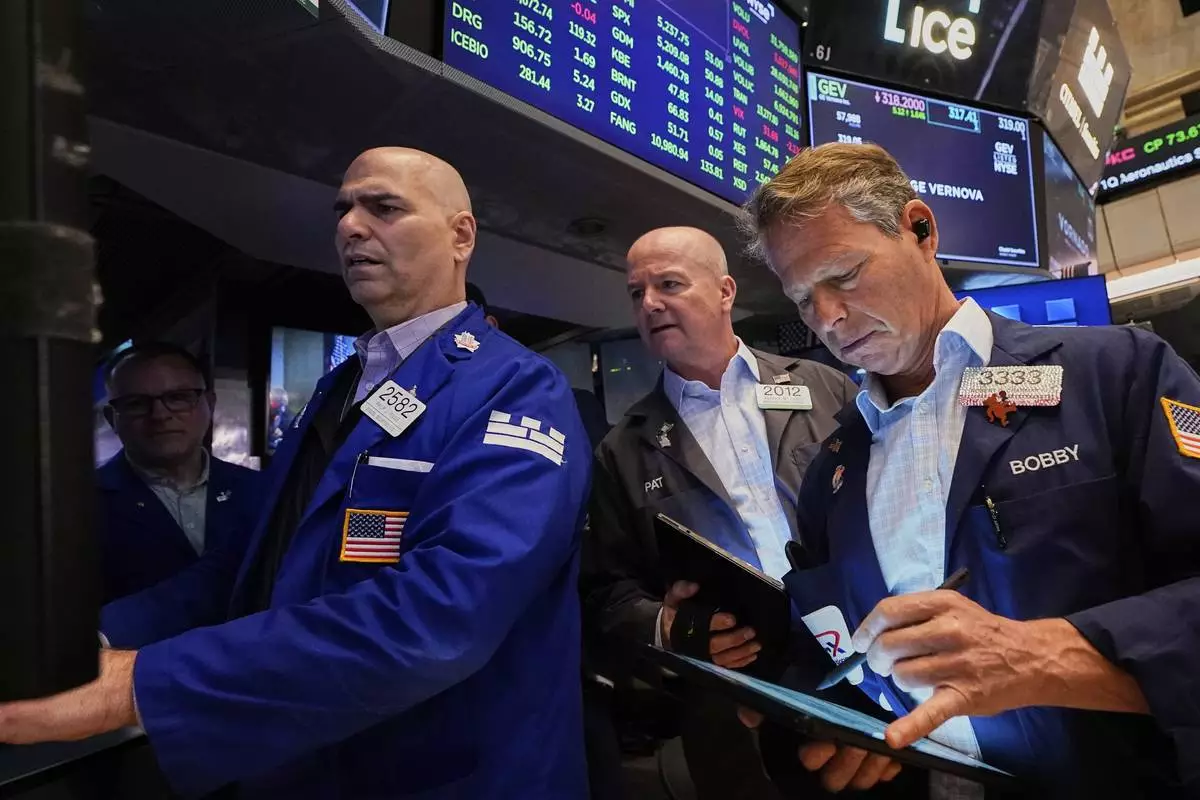
Specialist Philip Finale, left, works with traders Patrick Casey, center, and Robert Charmak on the floor of the New York Stock Exchange, Tuesday, April 22, 2025. (AP Photo/Richard Drew)
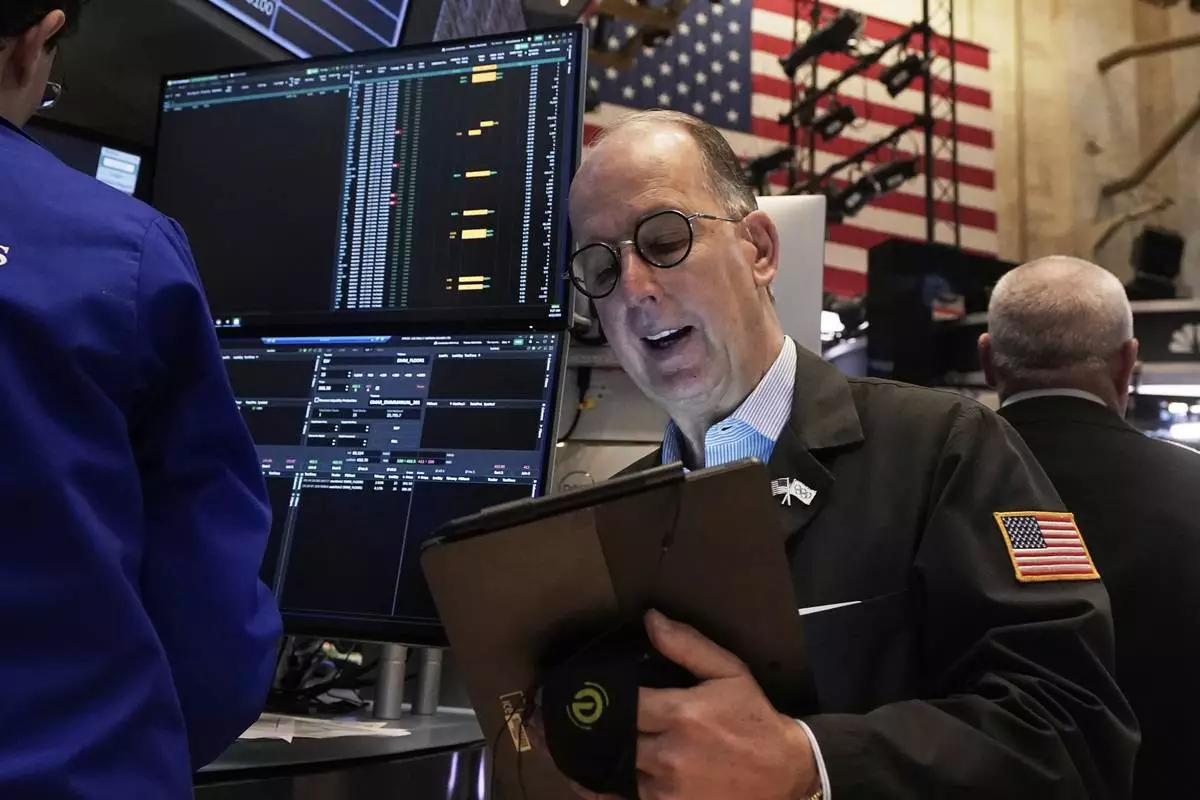
Trader Joe Dente works on the floor of the New York Stock Exchange, Tuesday, April 22, 2025. (AP Photo/Richard Drew)
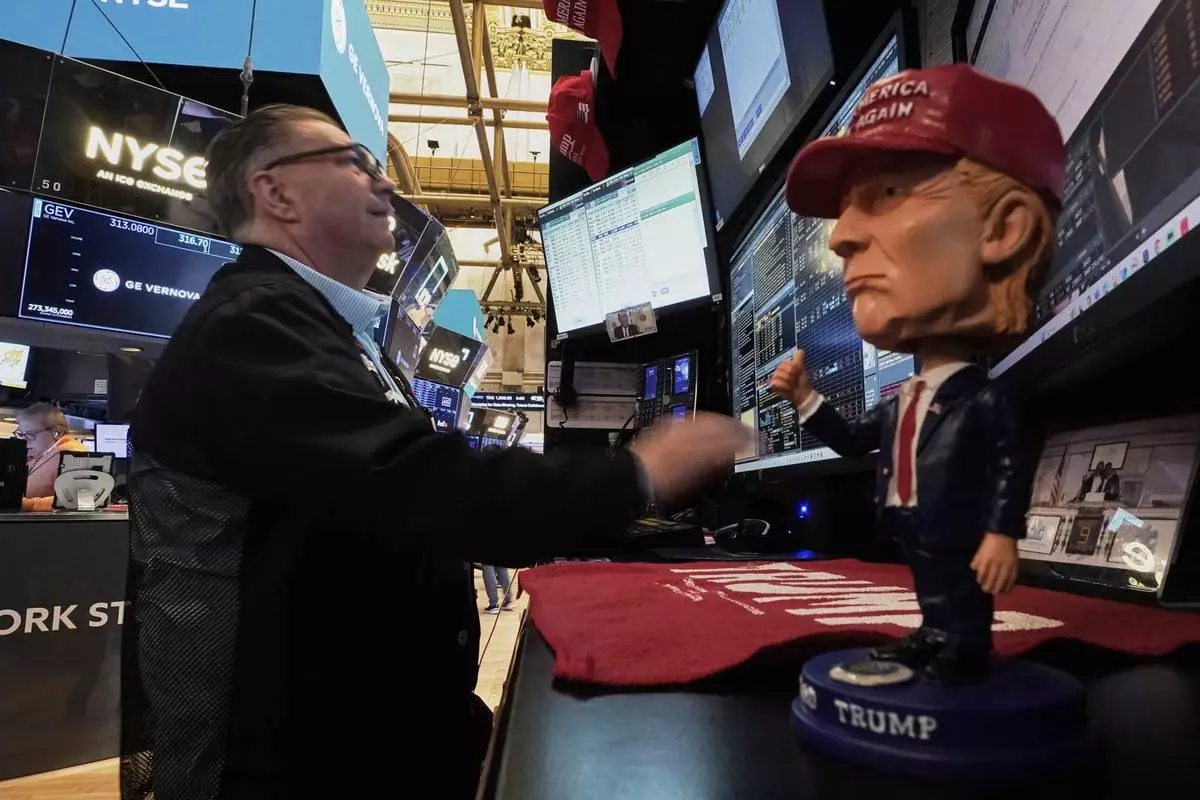
A Donald Trump bobblehead sits on the counter as trader Jonathan Mueller works on the floor of the New York Stock Exchange, Tuesday, April 22, 2025. (AP Photo/Richard Drew)

Specialist James Denaro, right, and trader Dylan Halvorsan, center, work on the floor of the New York Stock Exchange, Tuesday, April 22, 2025. (AP Photo/Richard Drew)
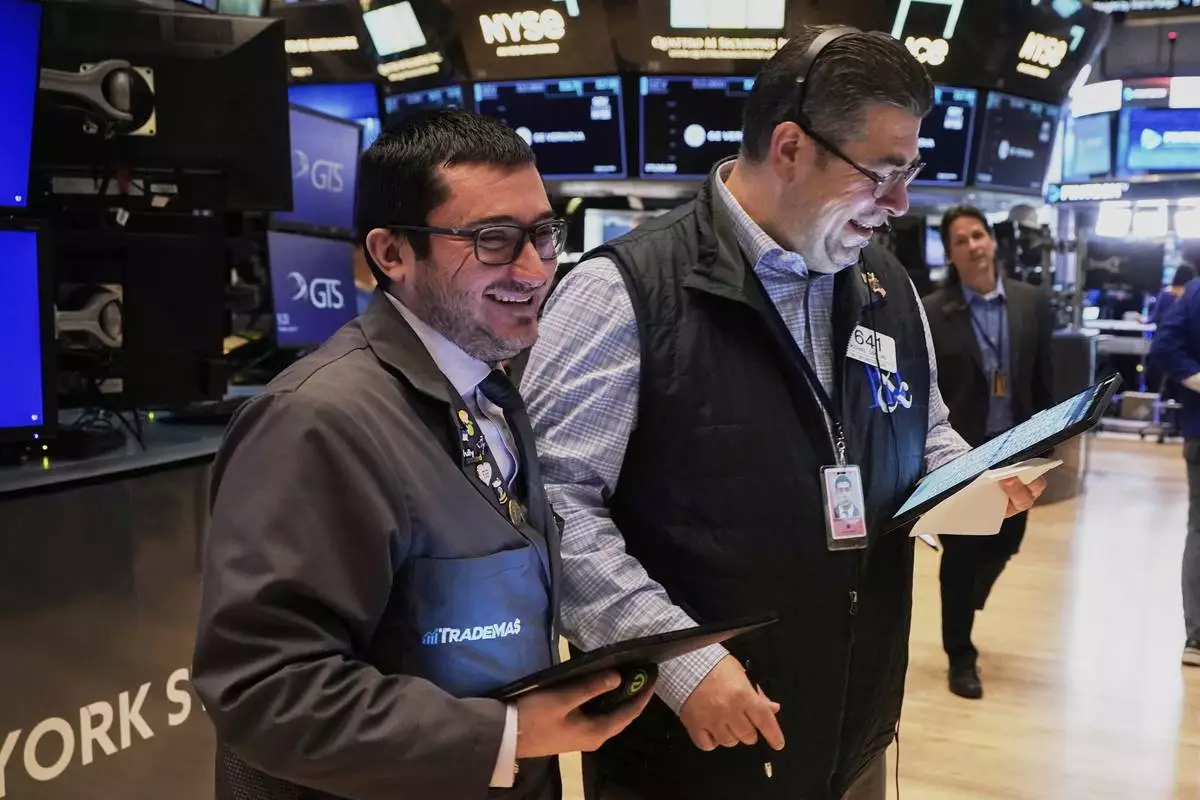
Traders Drew Cohen, left and Michael Capolino work on the floor of the New York Stock Exchange, Tuesday, April 22, 2025. (AP Photo/Richard Drew)

Currency traders watch monitors near a screen showing the Korea Composite Stock Price Index (KOSPI), top left, and the foreign exchange rate between U.S. dollar and South Korean won, top center, at the foreign exchange dealing room of the KEB Hana Bank headquarters in Seoul, South Korea, Tuesday, April 22, 2025. (AP Photo/Ahn Young-joon)

Currency traders work near a screen showing the Korea Composite Stock Price Index (KOSPI) and the foreign exchange rate between U.S. dollar and South Korean won, top right, at the foreign exchange dealing room of the KEB Hana Bank headquarters in Seoul, South Korea, Tuesday, April 22, 2025. (AP Photo/Ahn Young-joon)

A currency trader watches monitors near a screen showing the Korea Composite Stock Price Index (KOSPI) at the foreign exchange dealing room of the KEB Hana Bank headquarters in Seoul, South Korea, Tuesday, April 22, 2025. (AP Photo/Ahn Young-joon)




